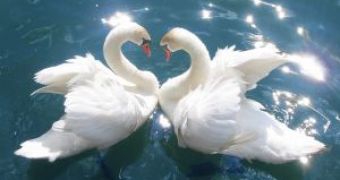For many years researchers searched whether the number of eggs laid by a female swan increases in time. According to the Darwinian theory it should. As swans have less predators, find food more easily and natural selection generally favors an increase in clutch size (the number of laid eggs) swans should have increased their clutch size.
However, many long-term studies of clutch sizes did not manage to prove such an increase. Researcher Ann Charmantier from Oxford University says debate has focused on an evolutionary point of view: Why is clutch size not evolving despite significant heritability and directional selection?
Instead, it should have been focused on a much more trivial question: how do you count the eggs? Apparently, that isn't such an easy task. The difficulty is that many nests are abandoned, while still having unhatched eggs.
Micheal Conover and Gary Kania studied mute swans in Connecticut and determined the number of abandoned nests: "We determined the cause of failure for 33 nests: 46% were flooded, 27% were abandoned, 15% were disturbed by humans, 6% were lost to predators, and 6% failed after a parent died."
Thus, one should not simply look for how many eggs a swan has laid, one should look for how many new birds successfully hatched. Darwinian selection favors the increase in birds, not necessarily in eggs.
The 25-year study of the selection, inheritance, and evolution in the mute swan population of Abbotsbury, England, done by Ann Charmantier's team, yielded data consistent with the direction predicted by evolutionary theory.
This supports the conclusions of the eight year study (1982 - 1990) conducted by Conover and Kania in Connecticut. The American scientists are particularly worried by the growth of swans because they present a threat to the local fauna.
"Expanding Mute Swan populations may have detrimental effects on native biota", Conover and Kania write. "One concern is the influence of swan herbivory on aquatic vegetation; another is that Mute Swans are aggressive toward other waterfowl species. Because many native species of waterfowl nest at inland sites, Mute Swans may pose more of a threat to native avifauna at inland sites than at estuaries and tidal rivers."

 14 DAY TRIAL //
14 DAY TRIAL //